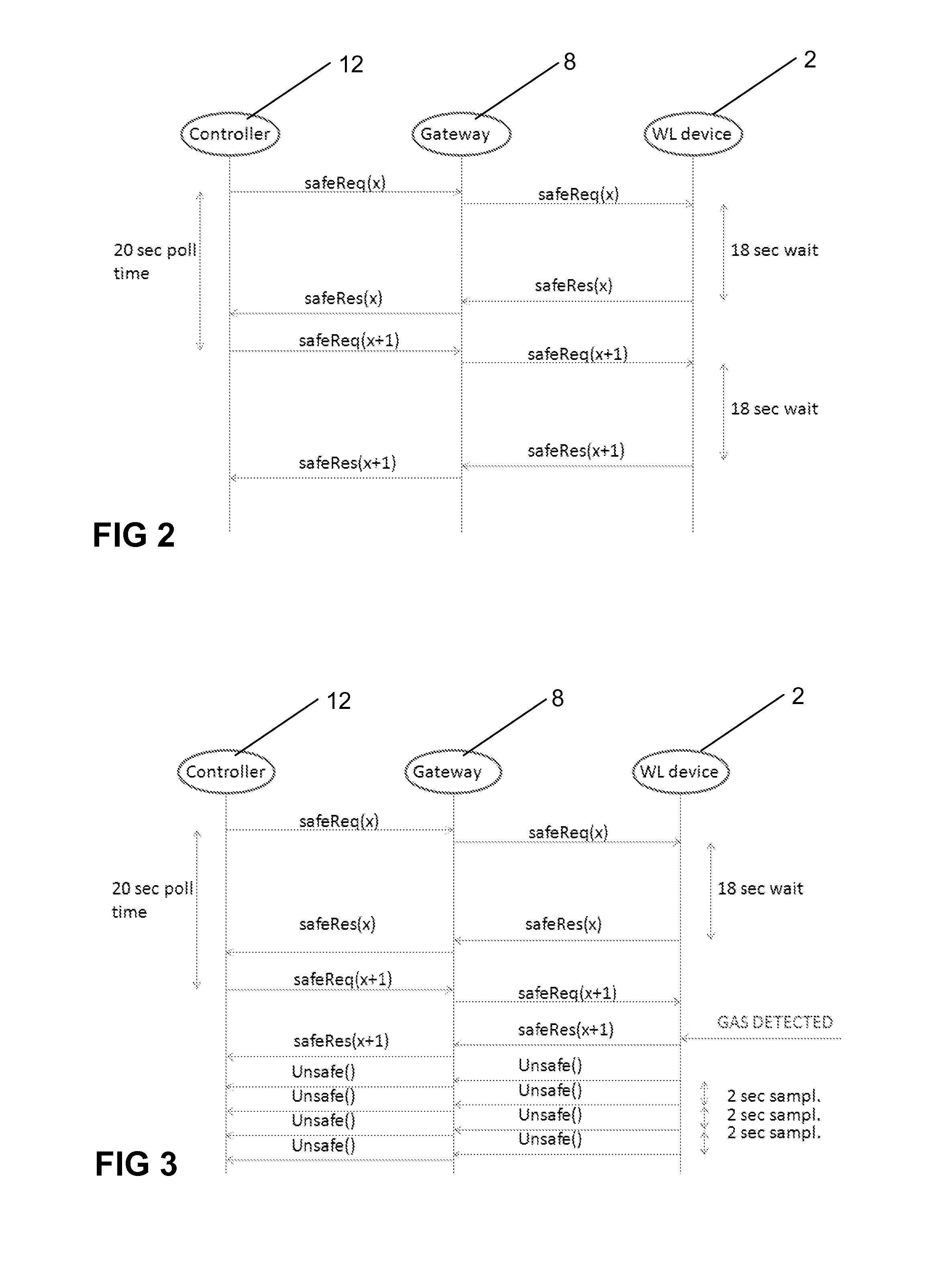Wireless sensor networks
- Summary
- Abstract
- Description
- Claims
- Application Information
AI Technical Summary
Benefits of technology
Problems solved by technology
Method used
Image
Examples
Embodiment Construction
[0034]Referring first to FIG. 1, there can be seen a network of hydrocarbon gas sensor units 2, 4. Each of the sensor units 2, 4 comprises a gas detector and a 2.4 GHz radio transmitter and receiver which are designed to operate the ISA100.11a or Wireless HART communication protocol, connected to an antenna 3. Of course these particular details are merely illustrative and other sensors and / or communication methods could be used instead.
[0035]Some of the sensor units 2 have a direct two-way radio link 6 with a gateway or proxy 8 which acts as an interrogating node as will be described in more detail hereinbelow. The remaining units 4 have radio links with other units 2 enabling multi-hop communication between the remote sensor unit 4 and the gateway 8. In this case the sensor units 2 with a direct link act as intermediate nodes. The sensor units may all be identical and configurable as intermediate or not, as required. Alternatively some may be capable of acting only as remote nodes....
PUM
 Login to View More
Login to View More Abstract
Description
Claims
Application Information
 Login to View More
Login to View More - R&D
- Intellectual Property
- Life Sciences
- Materials
- Tech Scout
- Unparalleled Data Quality
- Higher Quality Content
- 60% Fewer Hallucinations
Browse by: Latest US Patents, China's latest patents, Technical Efficacy Thesaurus, Application Domain, Technology Topic, Popular Technical Reports.
© 2025 PatSnap. All rights reserved.Legal|Privacy policy|Modern Slavery Act Transparency Statement|Sitemap|About US| Contact US: help@patsnap.com



